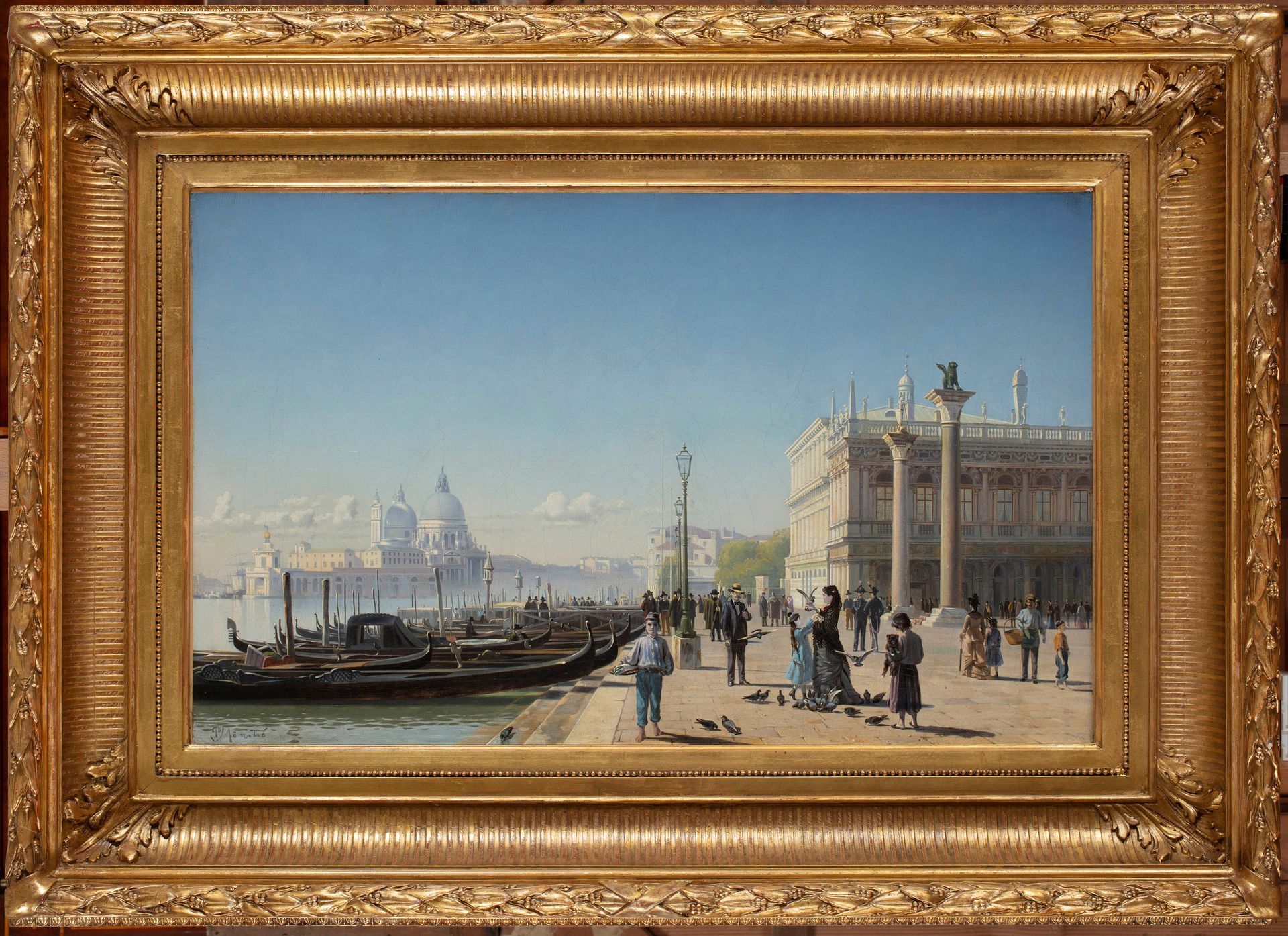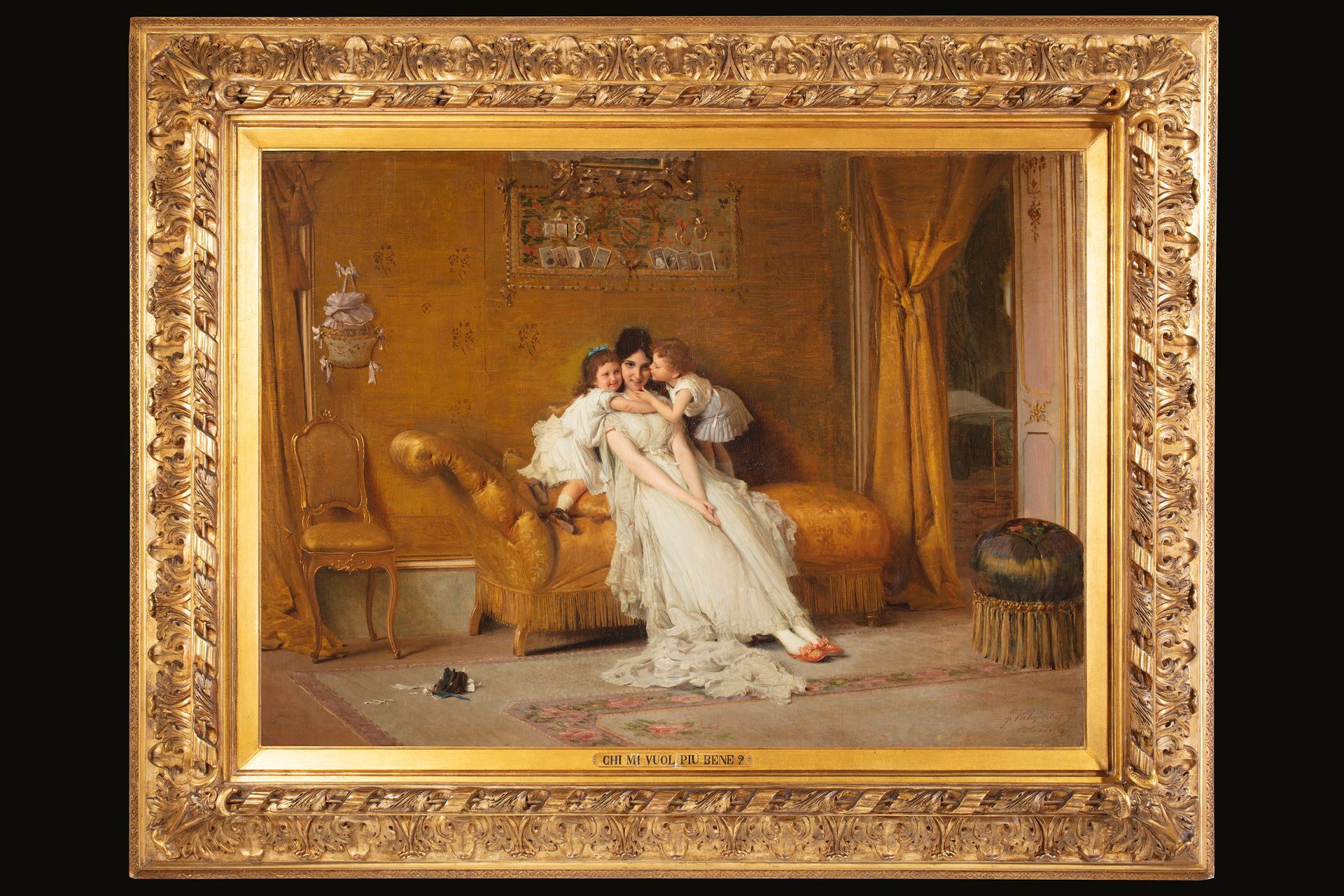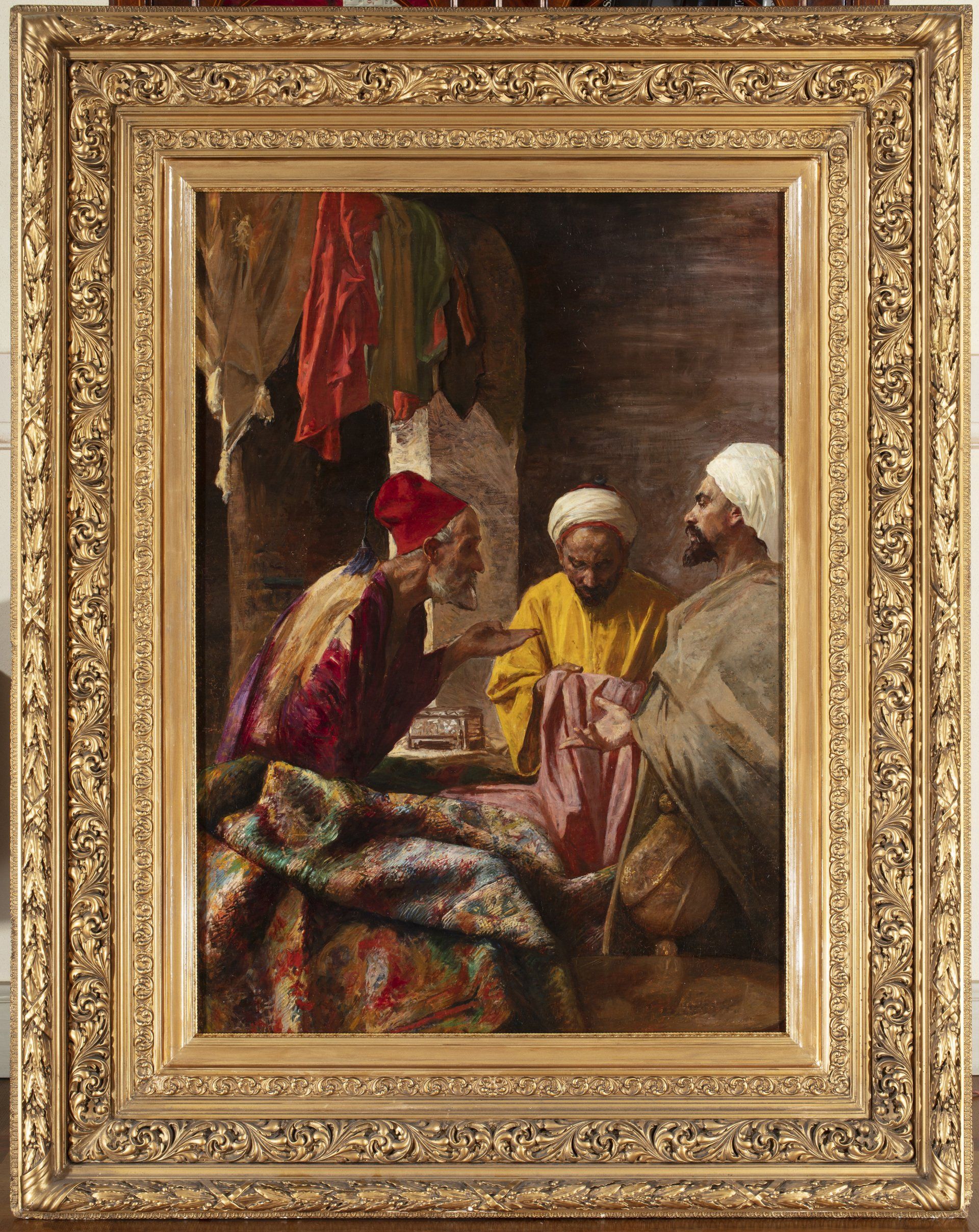Mariano Fortuny
Mariano Fortuny (Reus 1838 - Rome 1874)
Watercolor depicting Arab soldier. Measures without frame 34x24 cm., with frame 53x45 cm.
Biography:
Fortuny was born in 1838 in Reus, Catalonia, into a family of modest origins. At the age of twelve he lost his mother and was assigned to protect his grandfather. The latter immediately recognized his nephew's artistic abilities and sent him to the school of the painter Domènec Soberano (1825–1909) . Two years later, in 1852, when he moved to Barcelona, Fortuny was immediately noticed for his manual ability and thus obtained a scholarship that allowed him to attend the School of Fine Arts. Thanks to further funding, he was able to finish his studies in Rome, where he arrived in 1858. Here he made friends with the Roman painter Attilio Simonetti (1843-1925) with whom he traveled to Naples and came into contact with the Neapolitan pictorial environment. Simonetti became his pupil and shared his studio in Via Flaminia with him.
When the Spanish-Moroccan war broke out in 1860, the authorities in Barcelona commissioned Fortuny to travel to Morocco to immortalize the battle scenes; numerous works of excellent workmanship date from this period, including The Battle of Tetuán. In the months spent in Morocco Fortuny was strongly influenced by the chromatic vivacity of African colours, to the point that he returned to Tangier three more times: the predilection for oriental subjects would accompany him for the rest of his life. Returning from Africa, Fortuny then stopped in Paris (where he drew inspiration from the works of Delacroix) and then in Rome. His most famous work, La Vicaría, dates back to this second stay in Rome, as well as a series of small oils and watercolors that demonstrate his value as a miniaturist as well as his exceptional mastery of technique and color modulation. Théophile Gautier's enthusiastic comments ("Fortuny as an etcher equals Goya and approaches Rembrandt") quickly brought him international fame.
Fortuny married Cecilia de Madrazo, daughter of Federico de Madrazo, director of the Prado Museum, and in the following years he moved across half of Europe, living first in Paris (1870), then two years in Granada and finally in Rome. After a few short trips to Paris, London and Naples, Fortuny died in Rome on 21 November 1874 at the age of 36, following a malarial fever contracted during his stay in Naples and was buried in the Verano Cemetery. Immediately after his death it was his friend Simonetti who oversaw the first sale of objects collected by Fortuny. In 1875, at the Hôtel de Drouot in Paris, all the most important antiques that the master had bought during his many travels were auctioned.
Fortuny was a model for many Spanish artists of the second half of the 19th century. Among them, José Villegas Cordero stood out in particular, also operating in Italy.
In Reus, Fortuny's name is linked to the theater dedicated to him, as well as to streets and squares, while the town's priory church preserves the artist's heart.
Fortuny's son, Marià Fortuny i de Madrazo, was himself a famous painter as well as set designer and draftsman.
Related works
-
Julius Kohler (1873-1929)
ButtonGrande dipinto pompeiano raffigurante filosofo con due vestali
-
Peter Mork Monsted
ButtonVeduta di Venezia con scorcio di Piazza S. Marco e Punta della Dogana e Chiesa della Salute sullo sfondo.
-
Giuseppe Amisani
Button"Il Circo", olio su tavola
183x183 cm.
-
Omar Galliani
Button"Mantra"
100x200 cm.
Dittico, matita e tempera su tavola
-
Antoine Vierling
Button"Nella casa del pittore"
olio su tela, 74x94 cm.
-
Luigi Bechi
Button"Prime Lezioni"
Olio su tela, 149,5 x 106 cm.
-
Pietro Saporetti
Button"Emancipazione della donna"
olio su tela, 194x146 cm
-
Francesco Valaperta
Button"Chi mi vuol più bene?"
olio su tela, 77,5x108 cm.
-
Dipinto orientalista di Paul Leroy
ButtonOlio su tela, 72x98 cm.
-
Armando Spadini
ButtonDipinti a olio
-
Dipinto di Giovanni Muzzioli
Button“La danza delle spade”
Dim. 75x 125 cm.
-
Dipinto orientalista "Il mercante di tappeti"
ButtonScuola austriaca XIX secolo
-
Jules Joseph Lefebvre
Button"Allegoria dei vizi e delle virtù". Sul retro "paint par J.Lefebvre"
-
ANGELO VERNAZZA
ButtonRitratto moglie che dipinge.
Firmato A Vernazza
-
Dipinto di Filippo Monteverde
ButtonDipinto raffigurante ritratto di uomo con turbante orientale sul capo
-
Edward Mills
ButtonDipinto con pastorello orientale
-
Dipinto di Jeanne Bordes-Guyon
ButtonDipinto olio su tela raffigurante nudo di donna sdraiato, datato 1891.
-
Mosè Bianchi
ButtonDipinto raffigurante scena galante in un interno veneziano.
Contact us for information regarding the exhibited work
Fill out the form or call to set up a meeting Mobile 39 335 8125486 Mobile 39 335 7774612

Opening time
- Monday
- - -
- Tue, Wed, Fri
- - -
- Thursday
- -
- Saturday
- - -
- Sunday
- Closed
Via Roma, 22/a, 42100 Reggio Emilia RE
contact info
Ph. 39 0522 704575
Mobile 39 335 8125486Mobile 39 335 7774612
Sign up to our newsletter
and stay informed
Subscribe to the newsletter
Phidias Antiques VAT number 00655091205 - Copyrights © 2022 Privacy policy Company Register of Bologna n. 48267 - Int. vers. euro 10,400 - Type of company: srl






















